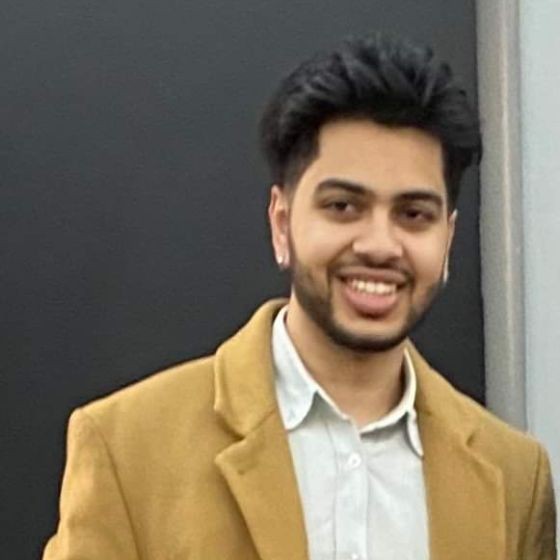The Intersection of Art and Science: A Springboard Alum Shares His Story

People talk a lot about the art/science divide, but I’ve always been more interested in the areas in which art and science intersect than the ones in which they diverge. As a result, I’ve spent the last couple of decades both writing about technology and building products and platforms that deliver digital content.
For most of that time, I’ve found it hard to get people to accept that these two things, in fact, go hand-in-hand. Marshall McLuhan’s maxim that “the medium is the message” is practically a cliché. But when you try and describe a career that involves both building the medium and crafting the message–it’s not so easy. In my experience, employers–when they’re hiring, at least–tend to want to put you in one camp or the other, when the whole point is that because of the way media is evolving, having an understanding of both sides of the equation is increasingly vital.
McLuhan’s insight, published back in 1964, was inspired by the way that movies and television were creating what he called a “global village.” The medium didn’t just transmit messages; it changed the way we related to one another, altering our understanding of ourselves and the world around us in profound and irreversible ways that far outstripped the power of any individual program or “message.” We focus on the content, but that actually just distracts us from the real change that the medium itself enacts on our behavior and our minds.
The internet has repeated this process, its impact as medium clearest in the last few years as social media combined with mobile phones to create entire new sets of behaviors (along with industries to encourage and exploit them). And now, with the arrival of another inflection point in information processing–the sudden leap forward in machine learning and artificial intelligence–the process is beginning again.
In order to keep pace with this latest wave of change, I spent the last year completing Springboard’s mammoth and marvelous Data Science Career Track. This impressive and intensive course combined online learning tools and weekly Skype sessions with my tutor, a brilliant young Czech data scientist. It took me all the way from the statistics of linear regression I’d last delved into as an undergrad neuroscience student in the late ‘80s through to building updated versions of the neural nets I’d been fascinated by as a philosophy of science postgrad in the early ‘90s.
Get To Know Other Data Science Students
Sunil Ayyappan
Senior Technical Program Manager (AI) at LinkedIn
Pizon Shetu
Data Scientist at Whiterock AI
Garrick Chu
Contract Data Engineer at Meta
On the way, it had the wonderful effect of bringing all the different strands of my weirdly disparate past together into a more or less coherent whole for the first time, really, since my first job back at Wired magazine in the 1990s (while forcing me to update a whole load of skill sets in math and programming, of course).
What I have come to realize over the years, and what is so wonderfully refreshing (and reassuringly human) about the current AI inflection in the evolution of computation, is that data science and machine learning require statistics and storytelling, deduction and induction, coding and writing, domain knowledge and technical skills. It isn’t enough just to plumb the pieces of the jigsaw together, like coders of the past have done too often; you have to do it in a real-world context that is much messier and more exposed than has ever been the case since the advent of the web.
These new techniques–or old techniques made new with the application of computing architectures and statistical techniques–are allowing machines to break through that barrier and start to interact with us, not via a keyboard and mouse, but on our own terms: in voice, text, or movement. And for a kid from Stratford-upon-Avon, England, who grew up wanting to be a writer but kept getting distracted by computers, this is a very big deal indeed.
It became clear at the age of 13, when my father bought me my first BBC Micro computer and I started being able to access Ceefax on the TV, that tech was changing content. How it was changing it–that wasn’t quite so obvious. I went on, after my science and tech-inflected studies (which also involved deep dives into philosophy, music, and literature), to intern at The Independent, which led me to start writing for the paper’s technology supplement Connected (the first such supplement in the U.K.).
From there I helped launch the country’s first dedicated art and tech magazine, Mute. This led to the aforementioned Wired, which led to my first book deal and a stint at the BBC, which led to a role as head of digital development at The Telegraph, during which time I got married and started a family.
One day I looked around and suddenly, there I was, all grown up and sitting at a desk across the street from Google, with whose execs I had occasional meetings about the finer points of SEO. The networks I’d not so long before been telling people were going to be rather more impactful than CB radio had started eating everything, including the business model of the newspaper I was at that moment sailing in.
Still thinking of this change in terms of content, and thinking that the problem was maybe with text as a format, I eventually left The Telegraph to join a video startup and slowly realized that the change was in fact about data. The term “big data” was coined around this time and it perfectly captured the nature of the sea in which we were now swimming (our media galleons having either sunk completely or started taking on so much water that many journalists besides myself were forced to abandon ship).
It seemed, then, that data was key and the medium was key, and so when I was approached by two doctors–one an old friend from my university days–and asked to help them do something about the crisis of communication in British healthcare, it felt like the right course to take. For three years we struggled and hacked our way to bring a compliant health-messaging solution into being. Then, last summer, when I was a few months into the Springboard course, and partly as a result of the confidence I’d gained from doing it, we raised pre-seed funding for our nascent startup.
Hospify isn’t an AI company–yet. But what it is doing by building a properly compliant and scalable messaging platform for healthcare in the U.K. and Europe is helping prepare for a world that will be changed by AI. Having a career that has spanned content creation, content platforms, data science, and machine learning has allowed me to understand in a very hands-on way that if we don’t build responsible frameworks in which data science can operate without automatically exploiting people or skewing their understanding of the world, then we risk either stunting the development of AI or channelling it in very dangerous directions. We’ve recently seen all too clearly what happens in the real world when data manipulation is allowed to roam unchecked. The health space is simply too important–and AI too potentially transformative–for us to risk doing that there.
To quote the Joe McMillan character from that excellent history of computing drama, “Halt and Catch Fire,” this is because computers aren’t the thing. They are the thing that gets us to the thing. And the thing is signal from noise, otherwise known as meaning. Signal only has meaning because humans imbue it with meaning, and as our world gets more complicated we need machines not to replace us, but to augment us, so that we can continue to pull off the trick of finding meaning in ever-greater collections of data, an operation in which content creation itself plays an integral part, and which therefore involves not just the sciences, but also the arts.
Data science is having a transformative influence on the realm of technology. As a result, there is a surge in demand for data scientists, machine learning engineers, and data analysts.
Since you’re here…
Curious about a career in data science? Experiment with our free data science learning path, or join our Data Science Bootcamp, where you’ll only pay tuition after getting a job in the field. We’re confident because our courses work – check out our student success stories to get inspired.
This post was written by James Flint. James is a writer and tech-for-good entrepreneur who recently completed Springboard’s Data Science Career Track. You can find him on Twitter @JamesFlint.





